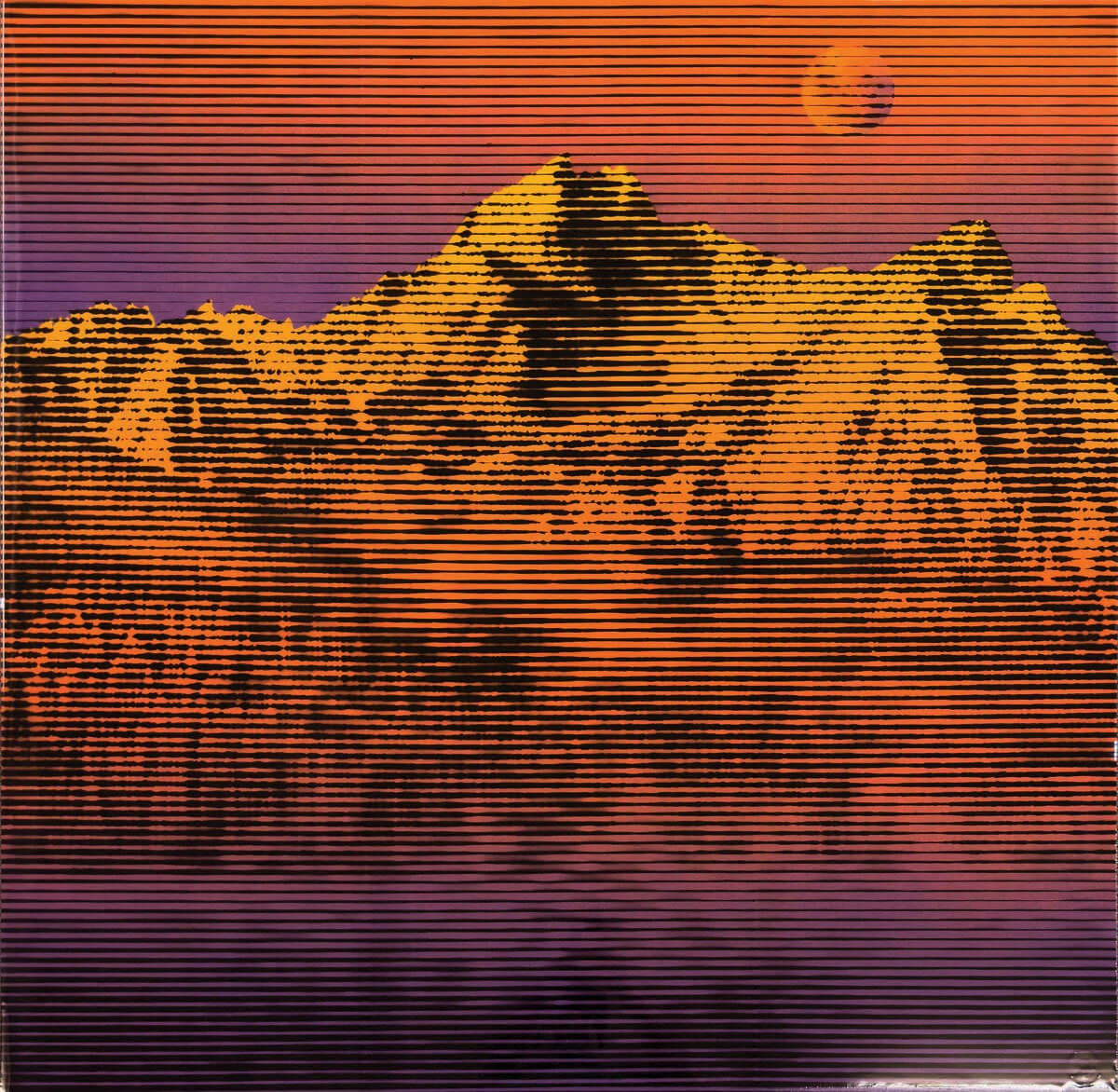
04 Jan Artist Spotlight: Rudi Broschofsky
Images by Rudi Broschofsky may strike viewers as delightfully intriguing optical conundrums. Are they paintings or photographs? Two-dimensional surfaces or illusorily shimmering 3-D grids? Limited-edition prints or one-of-a-kind artworks? Such puzzlements, however, only speak to how successfully this Idaho-based artist has developed his approach to painting.
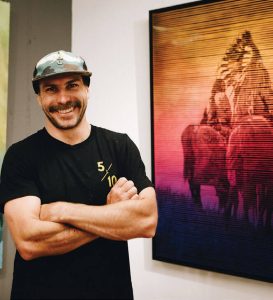
Broschofsky creates his art first by selecting iconic Western images: a proud portrait of Sitting Bull; an iconic image of a lone rider on horseback in Monument Valley; a glowering bison bull; or Elvis in his gunfighter pose from the movie “Flaming Star,” the same photo immortalized by Andy Warhol in his 1963 Double Elvis.
With an expert assist from his wife, graphic designer Cara Shumate, Broschofsky uniquely transforms those images into how they might be displayed in the horizontal scan lines of an old TV screen or the halftone dots of a newsprint photo, printing them out on large sheets of paper. Then, in a process that may take months of painstaking effort, Broschofsky uses an X-Acto knife to cut the paper into a stencil. Finally, he places the stencil atop an art panel and spray-paints the image in one or more colors. Sometimes, he’ll finish each painting with a two-part resin that gives it subtle depth and sheen.
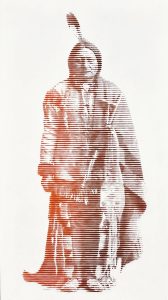
Sitting Bull | Hand-Cut Stencil and Spray Paint on Panel with Resin | 45 x 25 inches
“Generally, I’ll do an edition of four or six from one stencil, and no two are alike,” he says, adding that the stencil won’t survive beyond that limited number. “Every single time, it’s almost like rearranging spaghetti.”
Making such innovative art comes naturally to him. He grew up in Broschofsky Galleries in Ketchum, Idaho, founded by his parents in 1987 when Rudi was 5. “When I went off to college, I earned a business degree and took as many art and art history classes as I could because I decided I wanted to take over the gallery.” And that’s what he did, still running it today at age 41.
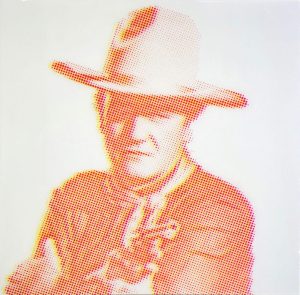
Peacemaker | Hand-Cut Stencil and Spray Paint on Panel with Resin | 48 x 48 inches
Meanwhile, he’d also begun making art himself in his spare time, and a gallery-owner friend invited him to participate in an iconoclastic 2012 show entitled Death to Day Jobs. Most of Broschofsky’s 15 or so works in the exhibition sold, “but they looked like 15 different styles by 15 different artists. That’s when I said to myself, ‘Let’s see if I can figure out how to be one recognizable artist.’” And his love of the then-rising tide of street art pointed the way.
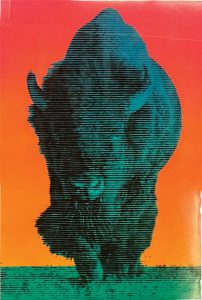
Big Buffalo Bull | Hand-Cut Stencil and Spray Paint on Panel with Resin | 60 x 40 inches
Today, while still running his gallery, where he can sometimes be found intently cutting his latest stencil, Broschofsky has earned the respect of his peers in both fields, exhibiting in other galleries as well and participating in such prestigious shows as the annual Western Visions at the National Museum of Wildlife Art. He’s enthusiastically exploring new — though still Western — subjects, and ambitiously aiming to expand his scale to mural size while creating more complex scenes by layering multiple stenciled images. “But I still want to focus on the West,” he says. “It offers endless subjects and inspiration.”

Gus | Hand-Cut Stencil and Spray Paint on Panel with Resin | 48 x 72 inches
Broschofsky’s work is represented by Broschofsky Galleries in Ketchum, Idaho; A RARE Gallery in Jackson Hole, Wyoming; Paderewski Fine Art in Beaver Creek, Colorado; and Montana Trails Gallery in Bozeman, Montana. He’ll be featured in a show at Altamira Fine Art in Scottsdale, Arizona, April 2 to 13.
Based in San Rafael, California, Norman Kolpas is the author of more than 40 books and hundreds of articles. He also teaches nonfiction writing in The Writers’ Program at UCLA Extension.






No Comments